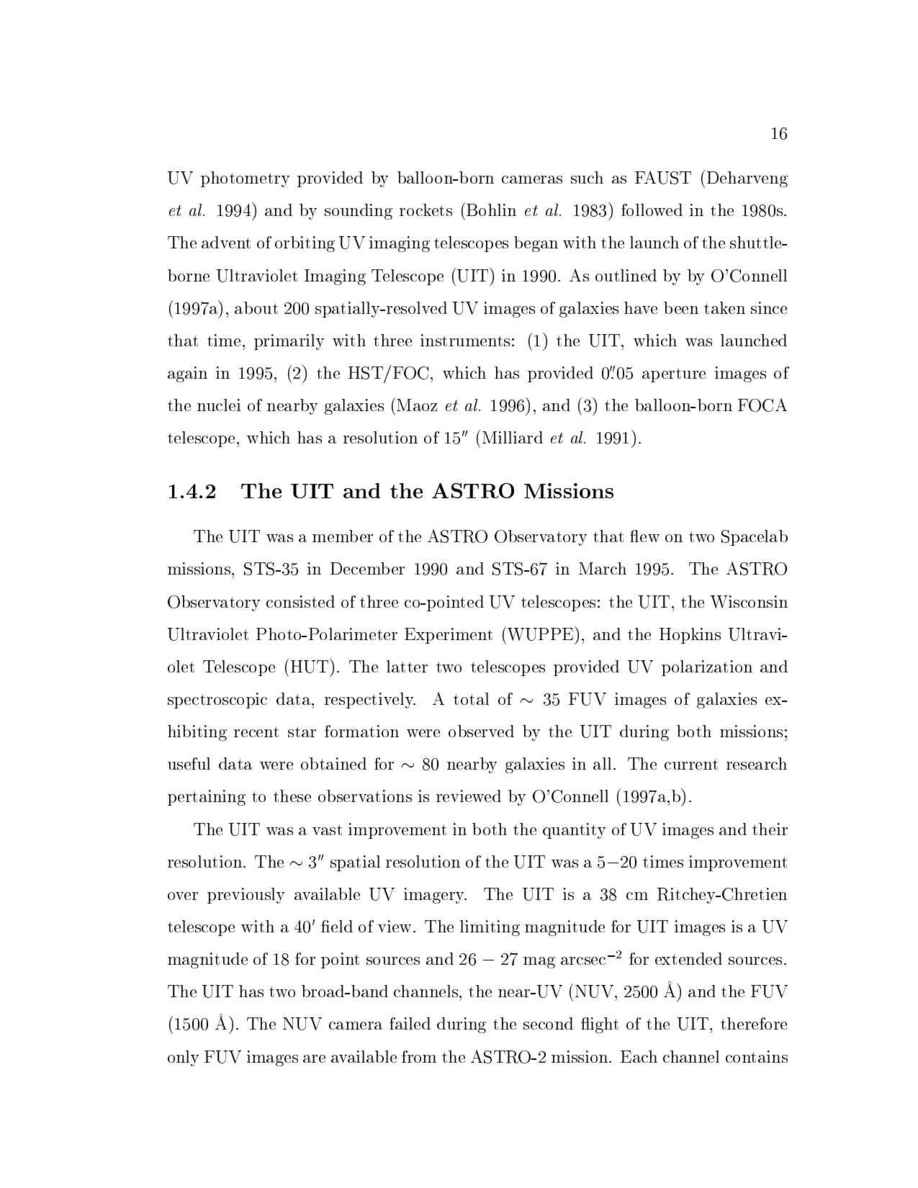
16
UV photometry provided by balloon-born cameras such as FAUST Deharveng
et
al.
1994 and by sounding rockets Bohlin
et
al.
1983 followed in the 1980s.
The advent of orbiting UV imaging telescopes began with the launch of the shuttle-
borne Ultraviolet Imaging Telescope UIT in 1990. As outlined by by O'Connell
1997a, about 200 spatially-resolved UV images of galaxies have been taken since
that time, primarily with three instruments: 1 the UIT, which was launched
again in 1995, 2 the HST FOC, which has provided 0
:
00
05 aperture images of
the nuclei of nearby galaxies Maoz
et
al.
1996, and 3 the balloon-born FOCA
telescope, which has a resolution of 15
00
Milliard
et
al.
1991.
1.4.2 The UIT and the ASTRO Missions
The UIT was a member of the ASTRO Observatory that ew on two Spacelab
missions, STS-35 in December 1990 and STS-67 in March 1995. The ASTRO
Observatory consisted of three co-pointed UV telescopes: the UIT, the Wisconsin
Ultraviolet Photo-Polarimeter Experiment WUPPE, and the Hopkins Ultravi-
olet Telescope HUT. The latter two telescopes provided UV polarization and
spectroscopic data, respectively. A total of
35 FUV images of galaxies ex-
hibiting recent star formation were observed by the UIT during both missions;
useful data were obtained for
80 nearby galaxies in all. The current research
pertaining to these observations is reviewed by O'Connell 1997a,b.
The UIT was a vast improvement in both the quantity of UV images and their
resolution. The
3
00
spatial resolution of the UIT was a 5
,
20 times improvement
over previously available UV imagery. The UIT is a 38 cm Ritchey-Chretien
telescope with a 40
0
eld of view. The limiting magnitude for UIT images is a UV
magnitude of 18 for point sources and 26
,
27 mag arcsec
,
2
for extended sources.
The UIT has two broad-band channels, the near-UV NUV, 2500 A and the FUV
1500 A. The NUV camera failed during the second ight of the UIT, therefore
only FUV images are available from the ASTRO-2 mission. Each channel contains
